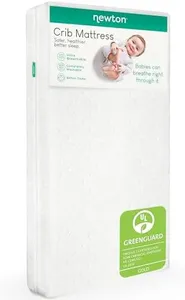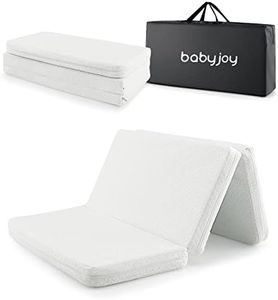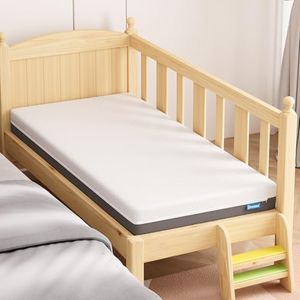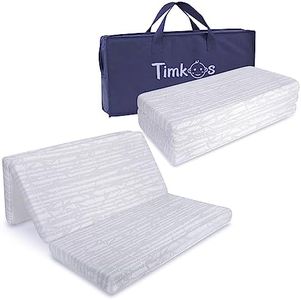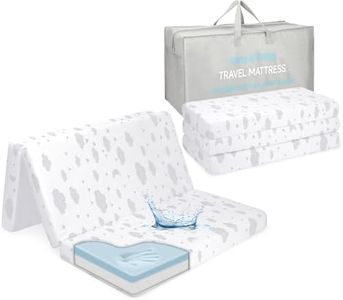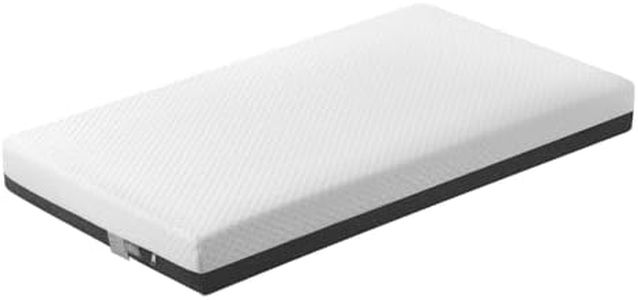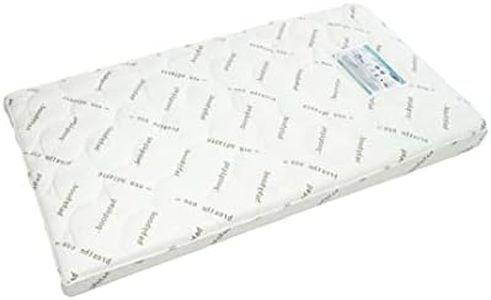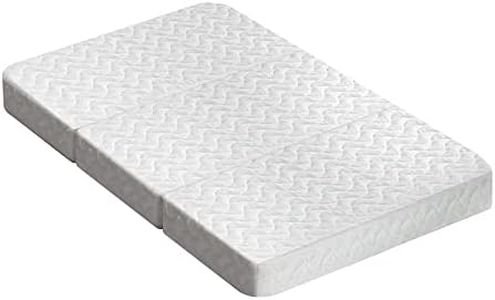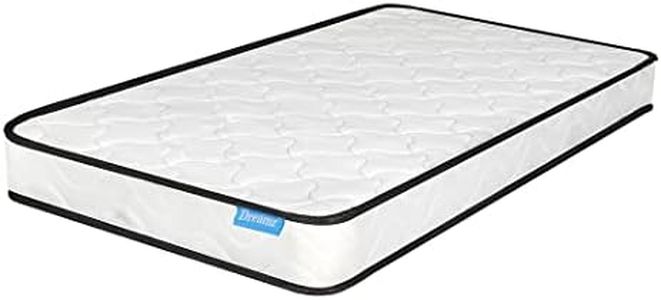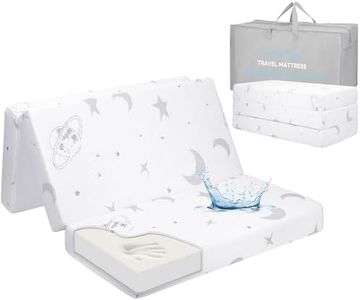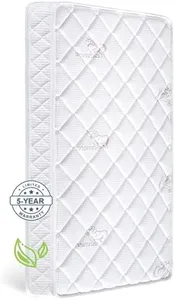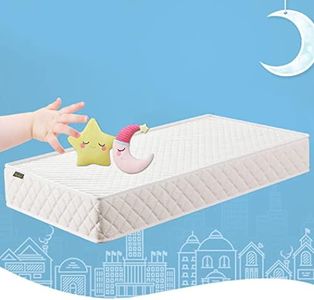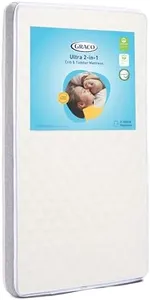We Use CookiesWe use cookies to enhance the security, performance,
functionality and for analytical and promotional activities. By continuing to browse this site you
are agreeing to our privacy policy
10 Best Infant Toddler Mattress
From leading brands and best sellers available on the web.Buying Guide for the Best Infant Toddler Mattress
Choosing an infant-toddler mattress is an important step in creating a safe and comfortable sleep environment for your child. Since your child spends many hours sleeping in their early years, the right mattress supports healthy growth and development while also reducing safety risks. When picking a mattress, consider how well it fits the crib, the materials used, firmness, breathability, ease of cleaning, and whether it can adapt as your child grows. Understanding these key specifications will help you match the mattress to your child’s current and upcoming needs.Size and FitSize and fit refer to how well the mattress matches your crib or toddler bed frame. This is crucial because an ill-fitting mattress can create gaps that pose safety hazards, such as trapping the baby’s limbs or even increasing suffocation risks. Sizes typically include standard and mini, with standard fitting most cribs snugly. Always measure your crib and ensure no more than two fingers fit between the edge of the mattress and the crib frame. Picking the correct size ensures safety and comfort, so always check the specific measurements required for your furniture.
FirmnessFirmness describes how hard or soft the mattress feels when you press it. For infants, a firm mattress is recommended because it helps prevent suffocation and supports developing bones and muscles. Toddlers, on the other hand, can transition to slightly softer surfaces as they grow. Some mattresses are reversible, offering a firm side for infants and a softer side for toddlers. To choose the right firmness, consider your child’s age and sleep safety: always use the firm side for infants and consult guidance when it’s time to flip for toddlers.
MaterialsThe materials making up the mattress can affect comfort, breathability, durability, and potential exposure to chemicals. Common materials include foam, innerspring, and organic or natural fibers. Foam mattresses are lighter and easy to move, while innerspring designs offer added support. Organic and hypoallergenic options limit chemical exposure, which some parents prefer for sensitive babies. Consider your priorities—ease of cleaning, environmental concerns, and support—when picking the right mattress material for your family.
BreathabilityBreathability relates to how well air flows through the mattress materials. A breathable mattress can help regulate your child’s temperature and may reduce overheating during sleep, which is especially important for infants. Some mattresses feature mesh sides or specialized open-cell foams for better airflow. If you live in a warmer climate or are concerned about overheating, look for highly breathable mattress options. Otherwise, standard mattresses with basic airflow features may suffice.
Waterproof and Washable FeaturesWaterproofing and washability indicate how easy the mattress is to clean up after inevitable messes like spills and accidents. Some mattresses come with waterproof covers or are fully encased to prevent liquid from seeping inside, while others have removable and washable covers for easy cleaning. If convenience and hygiene are top priorities, opt for a mattress with these protective features. This is especially helpful for infants and toddlers during potty training.
Dual-Sided DesignA dual-sided or convertible design means the mattress has two different surfaces: one firmer for infants and one softer for toddlers. This allows the mattress to grow with your child, supporting safe sleep from infancy through toddlerhood. If you want a long-lasting mattress that will serve multiple stages, look for a model described as dual-sided or convertible. Always follow manufacturer guidelines on when to switch sides.
CertificationsCertifications indicate that the mattress meets recognized safety or health standards, such as being free of certain chemicals or having passed safety tests. Examples include certifications for low emissions or use of organic materials. These can provide peace of mind if you are concerned about chemicals or allergens. Review what each certification covers to see if it aligns with your family’s needs and values, but remember, safety and fit should always remain top priorities.
